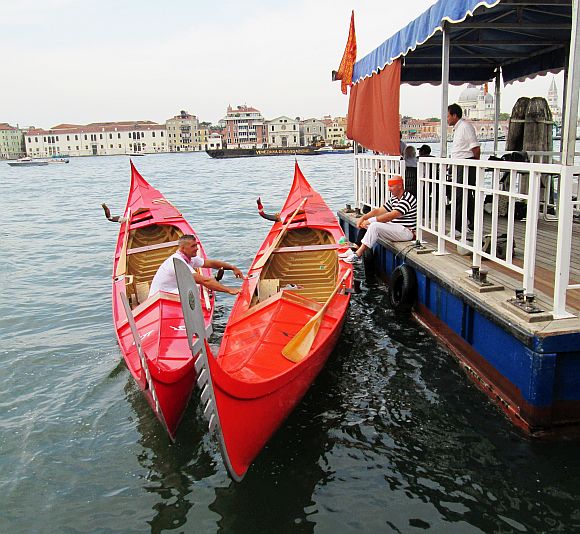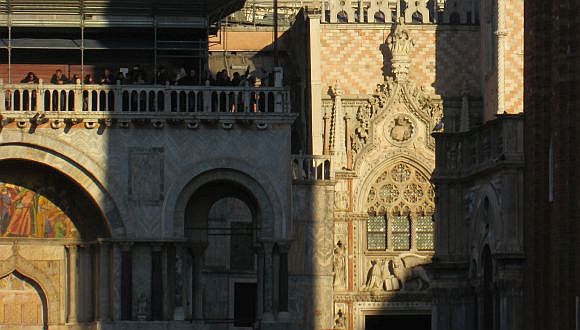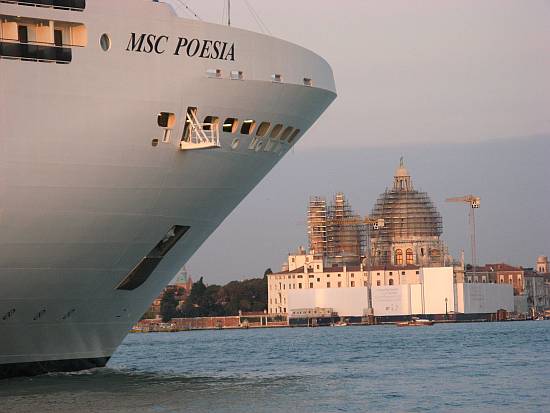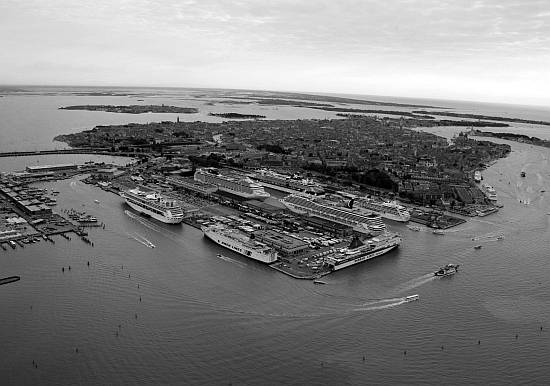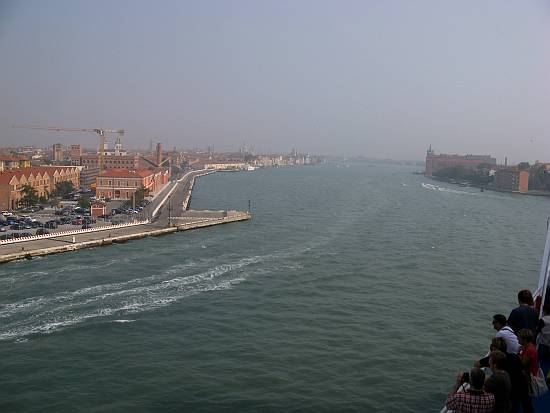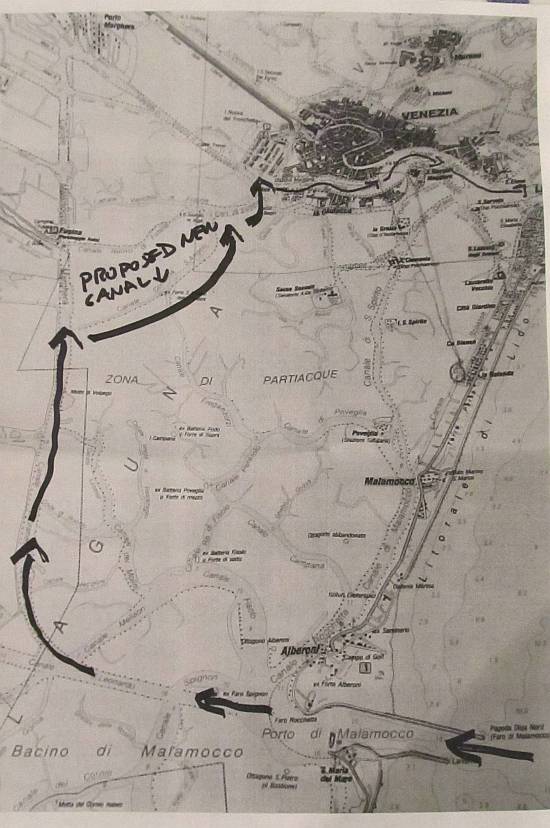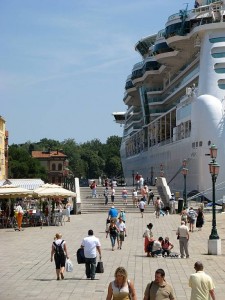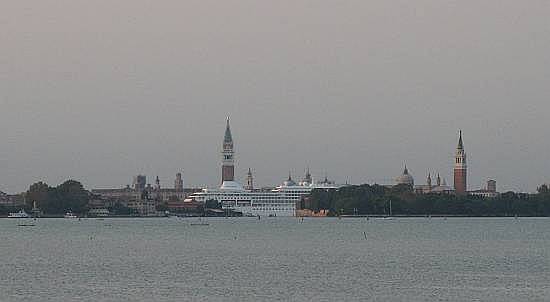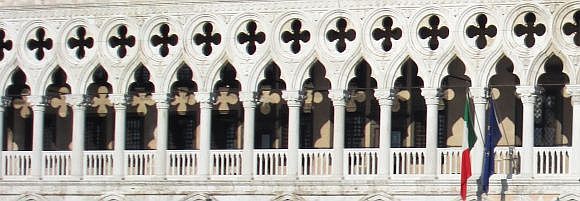
There has been quite an invigorating exchange of views in the Gazzettino the past two weeks or so, when real problems didn’t intervene.
The bickering was set off by a comment made by Oliviero Toscani, the photographer-provocateur best known for his extremely edgy ads for Benetton. “Shockvertising,” somebody called it. His greatest joy in life, perhaps his entire reason for being, is to enrage and offend people, including the people writing his paychecks.
No, that’s not true. His GREATEST joy in life is to advertise himself, and with just a few well-chosen canards he got himself a deluge of free publicity. I acknowledge that by writing this post I am colluding in this regrettable mania of his, which almost convinced me not to write about it. But here goes.
If it matters, which it doesn’t, he’s not from the Veneto. He was born in Milan (Lombardia).
The opening shot was made in an interview on February 2 during a broadcast on Radio 24 in a known-for-satirical-jabs program called “La Zanzara” (the mosquito). The context or question wasn’t given in the report I read, but his zinger was that “The Veneti are a people of drunks and alcoholics. Poor things, it’s not their fault that they’re born in the Veneto.”
The Veneti (people from the Veneto) gave some thought to this, and concluded that they don’t agree.
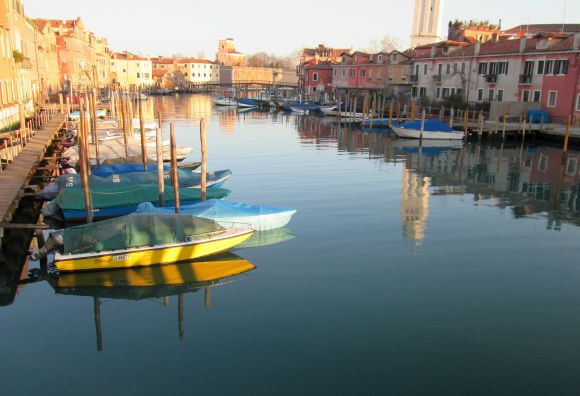
The counter-shots which followed were so many and varied that I have picked, trust me, only a few:
Luca Zaia, governor of the Veneto: “He should apologize,” adding a famous Veneto epithet, “Prima di parlar, tasi” (before you speak, shut up).
Arrigo Cipriani (Venetian restaurateur and icon): “I’ve always considered Oliviero Toscani a provincial, a phony cosmopolite; all of his provocations, even on multiracial themes, aren’t worth anything culturally. He probably had too much to drink before he made that statement.”
Lino Toffolo (Venetian comic): “It’s a little bit my fault.” He says this is because he made his career on television by caricaturing the Venetian as a drunk. “In films we were always depicted as servants, carabinieri, and dolts” (in Venetian, mone, which I will explain below). He continued with the pointed remark, in Venetian: “Se uno xe mona, lo xe tanto in dialeto che in talian” (If somebody’s a dolt, he’s one as much in dialect as in Italian”). I think he got that backwards, but you see what he’s saying.
“Alcoholic” and “mona” aren’t quite the same thing, but let’s keep moving.
“Mona” (MOH-na) is a very useful and versatile Venetian word. (Plural: Mone. MOH-neh.) Technically, it means a woman’s lady parts, but it is the daily word of choice for describing a person who is not merely a dimwit, but a very particular kind of stupid — an obtuse, mouth-breathing dork. An intelligent person can occasionally slip and commit a monada (the act perpetrated by a mona), but if the person him/herself is a mona, there’s little hope for him in the larger human sphere. A person could be a Nobel-prizewinning theoretical physicist, but in the realm of basic social skills could also very well be a mona.
One of the best examples of the usefulness of this word is a saying I’ve often heard Lino repeat, usually after the news of the death of some world-famous yacht racer who dies at sea, or world-famous Alpine guide who dies in an avalanche: “Mona chi se ciama bravo in mar/montagna” (Anybody who calls themselves expert at sea/in the mountains is a mona”).
In this case, our world-famous photographer has been dismissed with one of the most trenchant Venetian terms at hand. Because you could defend yourself by saying “I’m not an idiot,” but “I’m not a mona” just confirms that you are.
And it could have been left at that, but a few of the five million Veneti had something more to say.
Ulderico Bernardi, a sociologist and native of the Veneto: “The people at Benetton had to have been really drunk when they hired him. And” — he adds — “he also has gotten wrong the historical analysis. The stereotype of the drunken Veneto is not, in fact, ancient, seeing that Veneti and Venetians were considered the English of the Mediterranean, and that this people succeeded with a constant and intelligent effort to overturn the dramatic economic situation of a region that was among the poorest in Italy.”
A Veneto businessman named Remo Mosole from Breda Di Piave (Treviso) wrote to Toscani personally. “In my long working life, from the immediate post-war period to today, I have seen the Veneto rise from the blackest poverty to become one of the primary regions of Italy…Your affirmations have profoundly offended generations of Veneti… who worked humbly and firmly for their economic and social emancipation. Someone born in the Veneto today is not unfortunate, as you say, destined to the life of an alcoholic, but enjoys a level of well-being and health among the highest in the world.”
Beniamino Boscolo, Chioggia: “I think that an offense describes the person who makes it, and not the people it’s aimed at. Cin cin — to your health!”
Lino Narciso Giacomin: “‘Toscani: Veneti, a people of alcoholics.’ It’s as if one said: ‘Photographers, a people of mone.’ No! Only a few!”
Giovanni Gastaldi, Preganziol: “Everything has been said. I will add one pleasing and useful fact: In Italy, the Veneto Region, as of December 31, 2013, counts more than 134,000 active blood donors, with more than 127,000 donations. The Veneto is the third Region in Italy (behind Lombardia and Emilia-Romagna) for blood donations. Not so bad, considering the comments by the photographer. Good wine, good blood!”
Are we waiting to hear a resounding “Egad! What was I thinking? A thousand million apologies, it’s all a horrible misunderstanding and I should never have said any of those things!”?
Following is the photoshopped apology more or less extorted from Toscani:
“These can’t be the problems of you Veneti,” he started out. “I sincerely never thought that something said in an ironic and irreverent place like ‘La Zanzara’ could have this effect.” Seriously? He goes on:
“But by now that’s the way it is in Italy,” he said. “One gives greater weight to silly trifles than to serious things…. I was making a kind of photograph of the dialects of various parts of Italy. And among the tens of dialects, there was the Veneto. Listen, it’s not such a big thing to say that the Veneto, in his atavistic DNA, has a drawling way of talking, as in pain, like alcoholics. It’s that way!'”
That’s enough, you can stop now. No, he can’t: “But really, do you want to deny that this connection exists? Do you want me to pull out the statistics of the early 19th century when the Veneti drank even from early childhood? And let’s not forget that I said all this in a purely ironic context, on ‘La Zanzara.’ If I’d said that the Veneti are all sober, and don’t touch wine, I have the impression that I’d have made even more people mad. I ask to be excused by those who didn’t understand the ironic intention. I’ve received messages from many angry people, but also from some who have complimented me because, in the irony, there’s a little truth. And you know what I say? I’m going to ask to be excused by writing a book with all the insults I’ve received from Veneti, with their first and last names.”
“It wasn’t my intention to denigrate the Veneto. Perish the thought! It was irony even if, to say the truth, grappa, Prosecco, Amarone, Valpolicella, they’re all your wines, known in all the world. So let’s just close the subject with ‘But what the hell is he saying, that mona Toscani,’ and have a good laugh.”
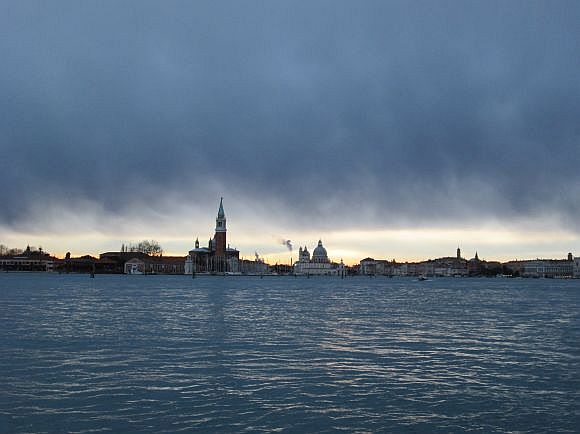
So why does Toscani persist in using an outdated stereotype? Lorenzo Marini, a colleague of Toscani’s who comes from Padova, suggests this: “The Veneti are the Calvinists of Italy, they’ve always thought about work, neglecting their image which is tied to their past as farmers and domestic servants. Therefore even when the reality has changed, the image has remained the way it was.”
If anyone would be interested in facts, studies last year revealed that the highest number of deaths related to the abuse of alcohol occurred in the regions of the Valle d’Aosta, Basilicata and Friuli Venezia Giulia, and the area around Bolzano (Trentino Alto Adige). No Venetians here.
But the thing has taken on a life of its own. On May 1-6, 2015 the Concours Mondial de Bruxelles, a vast international wine show, will be held in Jesolo just across the lagoon, and the mayor decided to make the most of all the hoohah by inviting Toscani to attend so he could taste all those amazing Veneto wines and “hopefully not get drunk.” Free publicity for Jesolo!
Toscani accepted. And he made a counter-offer, inviting Veneto Governor Luca Zaia and as many wine-makers of the Veneto as want to come to “Anteprima Vini,” a big wine event in Tuscany, Toscani being a board member of the Associazione Grandi Cru della Costa Toscana (Association of the Grands Crus of the Tuscan Coast), and also being a wine producer himself. Free publicity for Anteprima Vini! And his own label, whatever it is!
“My dear governor Zaia,” he wrote, “it’s not for encouraging a dispute between Veneti and Toscani (intentional play on words? “Toscani” also means Tuscans) but a round table, a modern Camelot of wine, culture, of congeniality and sobriety (but not too much).”
Time for the kisses and manly handshakes? Not even close. The Northern League (Lega Nord) has objected in the strongest possible terms to having him at Jesolo. “One invites Toscani only to publicly apologize to the Veneto,” snarled politician Daniele Bison. Free publicity for himself and his party! “I’m asking myself if the mayor was sober when he invited Toscani.”
Next up, the mayor of Musile di Piave, a small town eight miles (13 km) from Jesolo. He and his town council have approved a declaration that Toscani is “persona non grata” in Musile (pop.11,603). Free publicity for Musile! As if it needed it.
And in conclusion, a few people (not seeking publicity — maybe) took Toscani to court in Verona, formally accusing him of defamation. That didn’t get far.
“Toscani’s phrases don’t have penal relevance,” the judge declared.
“The stereotype of ‘drunken Veneti,’ like the great part of commonplaces, cannot reasonably be part of the crime of defamation,” the judge explained, “also because it’s applied to an indeterminate and impossible to determine number of persons. Therefore Toscani’s idea should be confined within the ignorance typical of commonplaces and doesn’t deserve to rise to the level of penality.”
His remarks may not qualify as penality, but they certainly qualified as a perpetual-motion publicity machine. With just a few little phrases (I liked the one about the “atavistic DNA”), Toscani created enough propaganda for himself — and so did enough other people, up to and including the judge — to choke all the horses of the Calgary Stampede.
Obnoxious, sure, but in the end he may not be such a mona after all.
